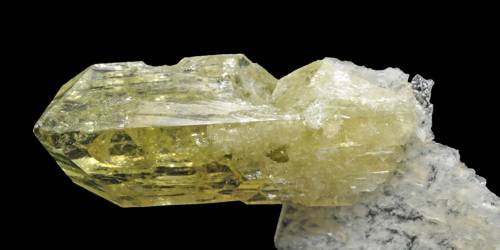Researchers from Tokyo Metropolitan University have created multi-layered junctions in transition metal dichalcogenides that are arranged in planes. They formed a thick, bonded, planar heterostructure by growing layers of multi-layered molybdenum disulfide structures from the edges of niobium doped molybdenum disulfide shards. They showed how these may be used to create brand-new tunnel field-effect transistors (TFET), which are extremely power-efficient components of integrated circuits.
Field-effect transistors (FETs) are a crucial building block of nearly every digital circuit. They control the passage of current through it depending on the voltage which is put across.
Although the majority of FETs now in use are metal oxide semiconductor FETs (also known as MOSFETs), researchers are currently looking for the next generation of materials to power increasingly power-hungry and compact devices.
This is where tunneling FETs (or TFETs) come in. Quantum tunneling, an effect where electrons can pass normally impenetrable barriers due to quantum mechanical forces, is the basis for TFETs.
TFETs are a significantly more energy-efficient alternative to conventional FETs, but no scalable method of implementing the technology has yet been developed by researchers.
A team of scientists of Tokyo Metropolitan University led by Associate Professor Yasumitsu Miyata has been working on making nanostructures out of transition metal dichalcogenides, a mixture of transition metals and group 16 elements.
Transition metal dichalcogenides (TMDCs, two chalcogen atoms to one metal atom) are excellent candidate materials for creating TFETs. Recent achievements have enabled them to assemble crystalline TMDC sheets spanning previously unheard-of lengths in layers that are only one atom thick.
Now, they have turned their attention to multi-layered structures of TMDCs. They demonstrated that they could grow out a distinct TMDC from the edge of stacked crystalline planes put on a substrate using the chemical vapor deposition (CVD) technique. The result was an in-plane junction that was multiple-layers thick.
Since prior attempts failed to achieve the high hole and electron concentrations necessary to make a TFET function, despite the excellent theoretical performance of in-plane junctions, most current research on TMDC junctions uses monolayers layered on top of one another.
They first used molybdenum disulfide generated from tungsten diselenide to show how reliable their approach was before focusing on niobium doped molybdenum disulfide, a p-type semiconductor.
The scientists achieved a thick p-n junction between TMDCs with an unheard-before high carrier concentration by building out multi-layered structures of undoped molybdenum disulfide, an n-type semiconductor.
In addition, they discovered that the junction exhibited a tendency for negative differential resistance (NDR), which is a crucial aspect of tunneling and a crucial initial step for these nanomaterials to enter TFETs. NDR is when increases in voltage result in decreasingly increasing current.
The research is published in the journal ACS Nano.
The technique used by the researchers may be applied to broad areas and is therefore appropriate for use when fabricating circuits. It is hoped that this innovative new development for contemporary electronics would eventually find use in applications.
















